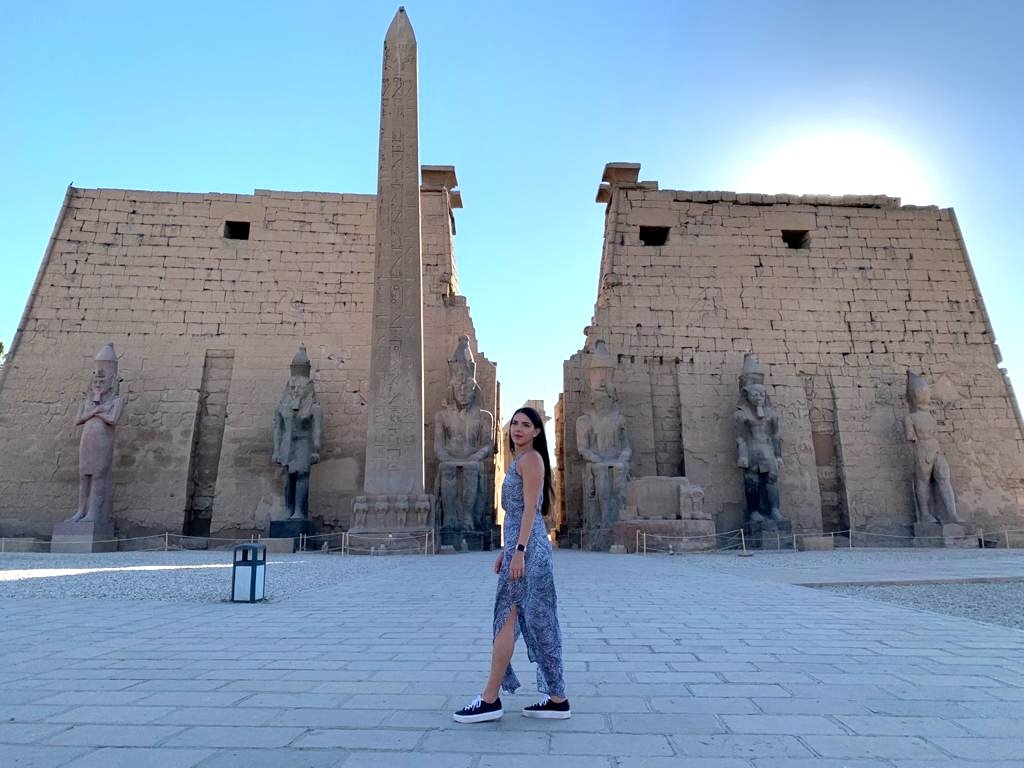Discovering Luxor Temple on Your Nile Cruise
When you plan a Nile cruise in Egypt, you will get a great chance to explore one of the best temples in Egypt, which still keeps the hieroglyphic inscription and the unique design of the ancient Egyptian temples.
The Luxor Temple, which was constructed during the reign of King Amenhotep III in the 18th dynasty to worship the god Amon Ra, in addition to confirming his lineage to the god Amon, as Amenhotep for his circumstances at that time was not able to assume the rule of Egypt, because he was not a former son of Pharaoh or married to the daughter of the Egyptian Pharaoh who previously ruled Egypt, and they were the conditions to assume the rule of Egypt at the time, so one of his men advised him to build a huge temple to glorify and worship the god of the country to confirm his lineage. Indeed, he succeeded in building the historical temple of Luxor.

When was Luxor Temple built?
The beginning construction was built by many kings, such as Queen Hatshepsut (around 1473-1458 BC), while the heart of the temple was built during the era of Amenhotep III (around 1390-1353 BC). That to support him for the throne of Egypt, as one of the internal rooms contains a group of scenes known as the scenery of divine birth, as the story of the king’s attribution to the idol Amon-Ephade himself tells us, and then King Ramses II, who added in the courtyard with the columns, the main entrance, (came to contain an entrance with two towers, and each tower dominated with three statues of the great king Ramses II, to photograph his war accomplishments and his victory over the enemies in it, each tower with a height of 24 meters (79 feet), built by Ramses II and decorated the tower with the scenes of Ramses’s military victories in (the Battle of Kadesh), and the victories of the Pharaohs later recorded, and the family victories 25 (the Nubian strain).
In addition to a group of huge statues at the front of the temple, the edifice included a pair of obelisks with a height of 25 meters, of which only one remained while the other was transferred to the Concorde Square in Paris in 1836 AD.
At the end of the third century AD, the Romans built a military barracks around the temple; the original murals were covered with plaster, and other views of the Greek-Roman artistic style were depicted, which depicted the Emperor Diocletian (284-305 AD) and three of his rulers, although these drawings have largely disappeared, but efforts are underway to return them to their previous glory.
During the Islamic state, the leader Abu Hajjaj Youssef built his mosque in 1373 AD above the ruins of the courtyard hall, and the mosque is still in service till now.

The old name of the Luxor temple.
The ancient Egyptians called the Luxor Temple by the name “Ept Rasit” meaning “the southern campus,” because of its position inside the old city of Thebes (currently Luxor). The temple is located about three kilometers south of the Karnak Temple, which was once linked to a path that borders the Sphinx with the head of the ram.
The design of Luxor Temple.
The Luxor Temple was not like most of the other ancient Egyptian temples on the East-West axis, but was built on a different axis to be linked with the temple of Karnak for celebrating the feasts in Ancient Egypt. The Luxor Temple was the main place of one of the most important ancient Egyptian religious celebrations, when the statues of both the deities and his wife were transported by the boat Opet.
Celebration of the Pharaoh’s feasts.
The Opet feast in the hieroglyphic language is a translation of “Love Nep” and means “the beautiful hour,” which represented the annual meeting between the idol, Amon Ra or Amun Ra (the god of sun, creation, and fertility), and his wife, the goddess Mut.
The celebration took place during the period of sacred marriage and started with the transfer of the sacred statue of Amon Ra in the Holy of Holies from the Karnak Temple and placed it in the sacred boat (which is designed with the forefront and the back of the head of Rams), holding the sacred boats of Amun and his wife. The shoulders of the priests who are apostates, the skin, their heads, and the journey begin with the sacred boats amid a group of musicians and artists, the trumpets, and a group of soldiers on the war vehicles heading to the Luxor Temple on the hymns of the glorification of Amon Ra, and the offerings are slaughtered on the participants.
After the celebration, the sacred boat was placed in the holy of holies in Luxor Temple for twenty-four days, then taken back to Karnak Temple.
Construction engineer and the designer of Luxor Temple.
Amenhotep bin Habo, a priest, engineer, and writer, also held many official positions during the reign of King Amenhotep III.
Amenhotep bin Habo told us in the inscriptions that describe his life that he was born at the end of the reign of King Tuthmosis III in the town of Atrib (currently Benha city, north of Cairo) to parents from the common people, who are Habo and his mother, Eto.
His first job was the assistant writer of the king, then he became the writer of the recruits as he was counting, organizing, and providing recruits to complete the king’s projects, whether civil or war, and held many titles that clarify the jobs that Amenhotep bin Habo mourned, including the supervisor of the priests, the author of the recruits, the royal writer, the director of all royal buildings, and the deputy king.
Amenhotep bin Habo, the architect engineer, was also building the third, where he built and supervised many of the facilities of Amenhotep III, including the funeral temple, which he built in the west.
His sufficiency was the third of his work by allowing him to establish a statue for him in the Temple of Amun, and this statue is present in the Egyptian Museum, as he was allowed to establish a cemetery for him, and Amenhotep bin Habo established a funeral temple in Western Thebes and carved his grave in the rocks near this temple, and this is considered a great honor for him as it is equal to the Pharaohs of the Kings.
It is believed that Amenhotep bin Habo died in the 31st year of King Amenhotep III’s rule, according to the inscriptions found in the cemetery of Ra Musa, and after his death his fame began and was renewed as a teacher and wise man, and he increased and increased the Egyptians’ reverence for him until he raised the rank of the gods in the era of the Ptolemies and became her family to recover.

Conclusion:
At the end of our journey between the pillars of the towering temple of Luxor, where the walls are whispering with the stories of the Pharaohs and the gods, we realize that this visit is not just a tour of a historical impact, but rather the beginning of a new chapter in our story with the Nile. What is the most wonderful way to complete this charming experience by returning to the arms of a Luxury River Nile Cruise, where you can see the sunset while dyeing the Nile page in warm colors, while the temple moves away a little from view. The combination of the greatness of history in the eastern righteousness and the pleasure of relaxation on an unforgettable Luxor Nile Cruise journey is the essence of the real adventure in Upper Egypt. Don’t be satisfied with visiting the sights, but live the entire legend on board a Nile Cruise from Luxor to Aswan.
While visiting the historical city of Luxor, whether you are a fan of Dahabiya Nile cruises or you stay there for a couple of days, your trip will not be forgotten. During the trip to Luxor Temple, you will get positive memories and learn more about ancient Egyptian culture. Your visit to Luxor Temple will be a part of a 4-day Nile cruise from Aswan or a 5-day Nile cruise from Luxor. With an expert tour guide, you will explore the secrets of the pharaohs.
Trusted Partners
Nile Cruisen: Chosen by Leading Brands as Egypt's Top Cruise Operator











